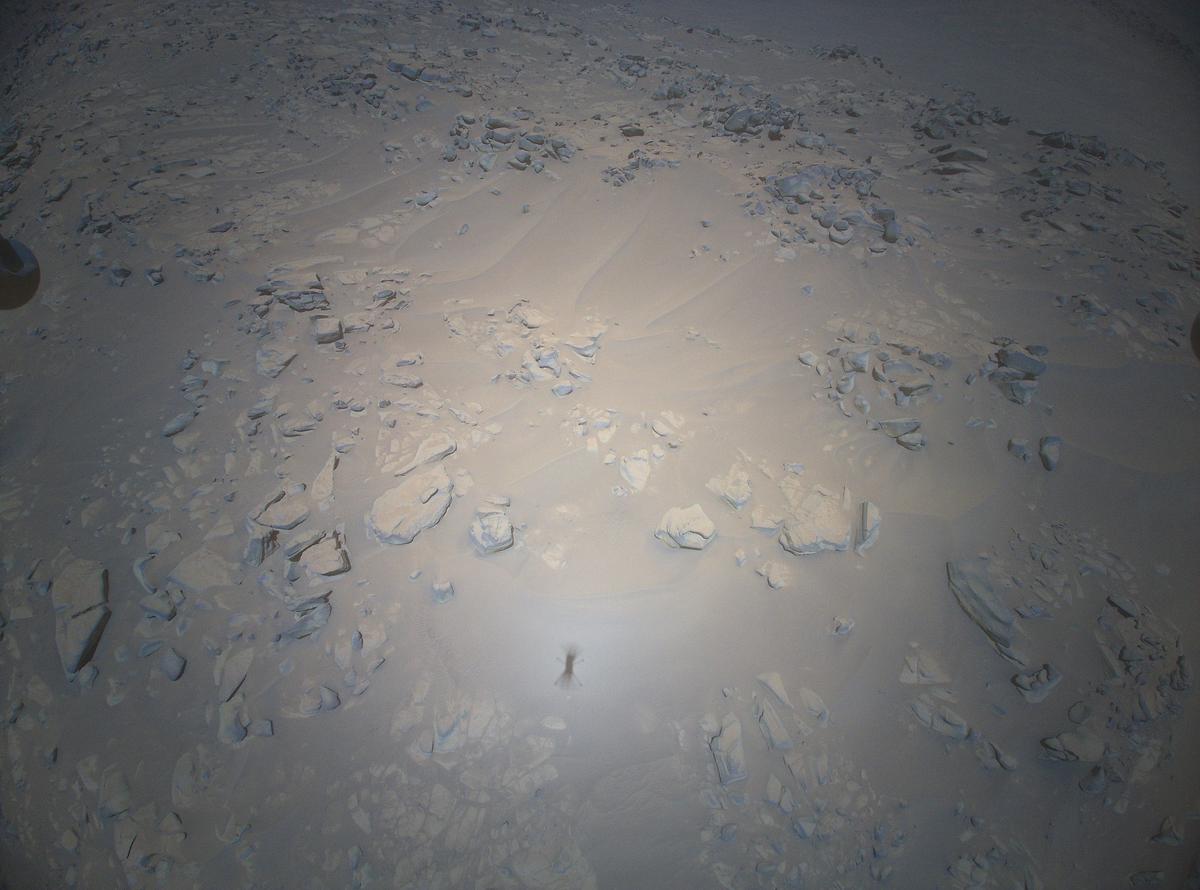We know of Mars as the Red Planet, for its surface and atmosphere is caked in endless swirling dust of rusted iron, the rusting action provided by the always-eager oxygen. But this was not always so.
Continue reading “Why Mars Died”Why Mars Died


We know of Mars as the Red Planet, for its surface and atmosphere is caked in endless swirling dust of rusted iron, the rusting action provided by the always-eager oxygen. But this was not always so.
Continue reading “Why Mars Died”
Imagine remotely flying a drone or small aircraft from a great distance and loosing contact with it during flight. You’d likely assume the worst, that your aircraft was probably laying in a crashed heap in some remote location.
That’s what engineers at NASA’s Jet Propulsion Laboratory went through with the beloved Ingenuity helicopter on Mars, millions of miles away. During a recent quick pop-up flight that was supposed to last just 32 seconds, Ingenuity lost communications before it touched back down. The engineers back on Earth had no idea if the little helicopter landed safely or not.
Continue reading “NASA Lost Contact With its Ingenuity Helicopter Briefly, but it's Back”
The exploration of Mars continues, with many nations sending robotic missions to search for evidence of past life and learn more about the evolution of the planet’s geology and climate. As of the penning of the article, there are ten missions exploring the Red Planet, a combination of orbiters, landers, rovers, and one helicopter (Ingenuity). Looking to the future, NASA and other space agencies are eyeing concepts that will allow them to explore farther into the Red Planet, including previously inaccessible places. In particular, there is considerable interest in exploring the stable lava tubes that run beneath the Martian surface.
These tubes may be a treasure trove of scientific discoveries, containing water ice, organic molecules, and maybe even life! Even crewed mission proposals recommend establishing habitats within these tubes, where astronauts would be sheltered from radiation, dust storms, and the extreme conditions on the surface. In a recent study from the University Politehnica Bucuresti (UPB), a team of engineers described how an autonomous Martian Inspection Drone (MID) inspired by the Inginuity helicopter could locate, enter, and study these lava tubes in detail.
Continue reading “Future Mars Helicopters Could Explore Lava Tubes”Maybe Mars isn’t as dry as we thought. ESA’s Mars Express has revealed new details about a region near Mars’ equator that could contain a massive deposit of water ice several kilometers deep. If it is indeed ice, there is enough of it in this one deposit that if melted, water would cover the entire planet up to 2.7 meters (almost 9 feet) deep.
But ice is just one explanation for the unusual features detected by the orbital spacecraft. Another is that this is a giant pile of dust several kilometers deep — although the dust would still need to have some ice mixed in.
Continue reading “The Ice Sheet on Mars is Even Thicker Than Previously Believed”Mars is the next frontier of human space exploration, with NASA, China, and SpaceX all planning to send crewed missions there in the coming decades. In each case, the plans consist of establishing habitats on the surface that will enable return missions, cutting-edge research, and maybe even permanent settlements someday. While the idea of putting boots on Martian soil is exciting, a slew of challenges need to be addressed well in advance. Not the least of which is the need to locate sources of water, which consist largely of subsurface deposits of water ice.
Herein lies another major challenge: Martian ice deposits are contaminated by toxic perchlorates, potent oxidizers that cause equipment corrosion and are hazardous to human health (even at low concentrations). To this end, crewed missions must bring special equipment to remove perchlorates from water on Mars if they intend to use it for drinking, irrigation, and manufacturing propellant. This is the purpose of Detoxifying Mars, a proposed concept selected by the NASA Innovative Advanced Concepts (NIAC) program for Phase I development.
Continue reading “A Biocatalytic Reactor for Detoxifying Water on Mars!”
There’s overwhelming evidence that Mars was once wet and warm. Rivers flowed across its surface and carved intricate channel systems revealed by our orbiters. Expansive oceans even larger than Earth’s may have covered a third of its surface. Then something happened: Mars lost its atmosphere, cooled down, and surface water disappeared.
Continue reading “Early Mars Climate was Complex, with Streams Flowing Intermittently for Millions of Years”
The surface of Mars is hostile and unforgiving. But put a few meters of regolith between you and the Martian sky, and the place becomes a little more habitable. Cave entrances from collapsed lava tubes could be some of the most interesting places to explore on Mars, since not only would they provide shelter for future human explorers, but they could also be a great place to find biosignatures of microbial life on Mars.
But cave entrances are difficult to spot, especially from orbit, as they blend in with the dusty background. A new machine learning algorithm has been developed to quickly scan images of the Martian surface, searching for potential cave entrances.
Continue reading “Machine Learning Could Find all the Martian Caves We Could Ever Want”
The day when human beings finally set foot on Mars is rapidly approaching. Right now, NASA, the China National Space Agency (CNSA), and SpaceX have all announced plans to send astronauts to the Red Planet “by 2040”, “in 2033”, and “before 2030”, respectively. These missions will lead to the creation of long-term habitats that will enable return missions and scientific research that will investigate everything from the geological evolution of Mars to the possible existence of past (or even present) life. The opportunities this will create are mirrored only by the challenges they will entail.
One of the greatest challenges is ensuring that crews have access to water, which means that any habitats must be established near an underground source. Similarly, scientists anticipate that if there is still life on Mars today, it will likely exist in “briny patches” beneath the surface. A possible solution is to incorporate a system for large-scale water mining operations on Mars that could screen for lifeforms. The proposal, known as an Agnostic Life Finding (ALF) system, was one of thirteen concepts selected by NASA’s Innovative Advanced Concept (NIAC) program this year for Phase I development.
Continue reading “NASA Selects New Technology to Help Search for Life on Mars”
When NASA decided to send the little Ingenuity rotorcraft to Mars on the belly of the Perseverance rover, they weren’t certain of success. Nothing like it had ever been attempted in Mars’ extremely thin atmosphere. Mission planners hoped and planned for a total of five flights, enough for a technology demonstration.
But now, as almost everyone knows, Ingenuity has wildly exceeded NASA’s initial expectations.
Continue reading “Ingenuity’s 69th Flight is its Farthest So Far”
On November 8th, NASA’s Curiosity Rover paused its incessant science work and just watched the day unfold on Mars. The rover used its black-and-white Hazard-Avoidance Cameras (Hazcams) to watch an entire 12-hour day on Mars as the shifting Sun cast shadows across the Martian landscape. NASA chose this day because of the Mars solar conjunction when the Sun interferes with communications with the Red Planet, meaning the rover doesn’t do any roving about. The timelapse comprises 25 frames from both the front and rear Hazcams.
Continue reading “Watch a Full Martian Day, From Dawn to Dusk”